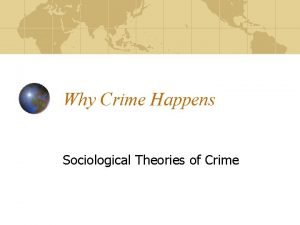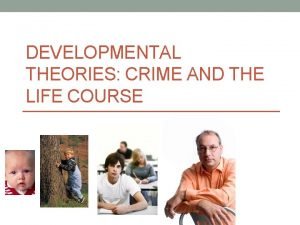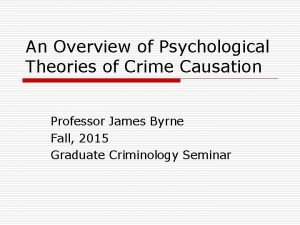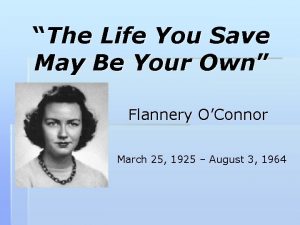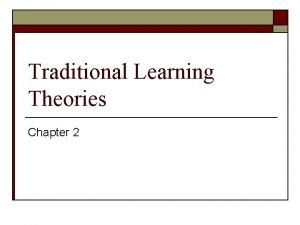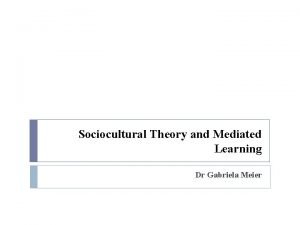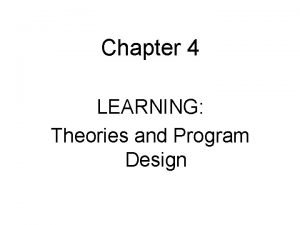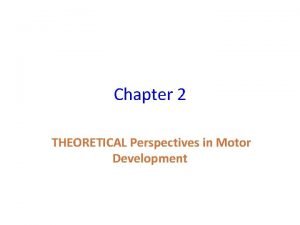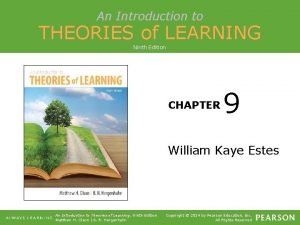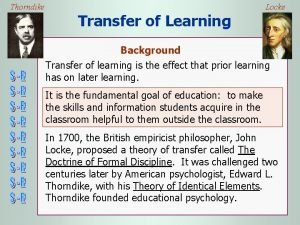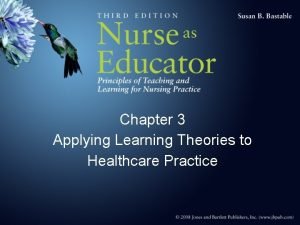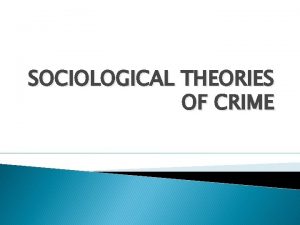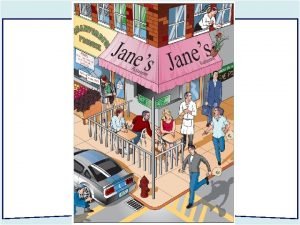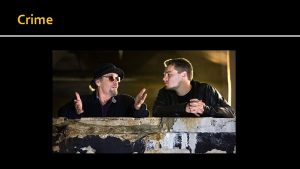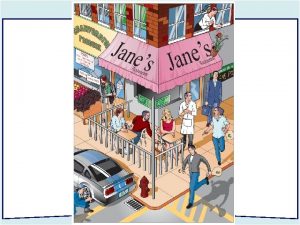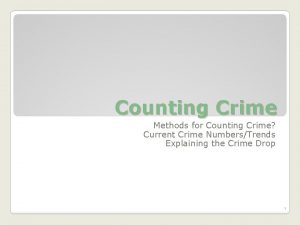Learning Theories A Life of Crime Could you



















- Slides: 19

Learning Theories

A Life of Crime? • Could you go out tomorrow and begin a life of crime? – What kind of crime would get into? – How would you get started?

Learning Theory • Criminal behavior is learned in a social context • The main difference between criminals and non-criminals is what they have learned

Edwin Sutherland’s (1934) Differential Association Theory 1. Criminal behavior is learned… 2. In interaction with other people… 3. Particularly intimate groups (family and peers)

Differential Association Theory 4. Learning includes a. Techniques b. Motives/drives c. Rationalizations/attitudes 5. Criminals learn to define the legal code as unfavorable

The Heart of Differential Association Theory 6. Crime results from an excess of definitions favorable to law violations over definitions unfavorable to law violations (a ratio)

Differential Association Theory 7. Differential associations vary in a. Frequency b. Duration c. Temporal priority d. Intensity

Differential Association Theory 8. Learning crime is the same as learning anything else 9. Criminal and noncriminal behavior are the result of learned needs and values (desire for material success)

Refining Differential Association Theory • Problem with Diff. Assoc. Theory – Learned attitudes -> behavior • Differential Reinforcement Theory (Burgess, Akers)

Distinguishing Features of Diff. Reinforcement Theory • Differential Reinforcement – Lifetime balance of anticipated or actual rewards and punishments -> probability of behavior • Imitation

Overview • Differential Association Theory (Sutherland) • Differential Reinforcement Theory (Burgess and Akers)

Limits of Learning Theory

Ever Smoked Pot? Yes 69. 4% Smoke Pot Weekly? Yes 12. 5% How can we explain this?

Becker’s View • The motivation to get high regularly is learned • Users must learn to experience pot smoking as pleasurable • Assumption: Users and non-users are fundamentally the same

Necessary Condition, 1 • Learning the Technique

Necessary Condition, 2 • Learning to connect the drug to its effects

Necessary Condition, 3 • Learning to Enjoy the Effects

Why is s/he a pothead? • Motivation to get high regularly is learned in the process of smoking • No learning, no motivation, no regular pot smoking

Other Applications of Learning Theory in Criminology
 Sociological theories of crime
Sociological theories of crime Modern biological theories of crime
Modern biological theories of crime Developmental theories of crime
Developmental theories of crime Psychological theory of criminal behavior
Psychological theory of criminal behavior The life you save
The life you save You were the word at the beginning
You were the word at the beginning If i could only teach you one thing why god made you
If i could only teach you one thing why god made you Major prophets
Major prophets If you could be invisible what would you do and why?
If you could be invisible what would you do and why? If you have three wishes what would it be
If you have three wishes what would it be Cuadro comparativo de e-learning
Cuadro comparativo de e-learning Traditional learning theories
Traditional learning theories Scaffolding theory bruner
Scaffolding theory bruner Learning theories and program design
Learning theories and program design Motor development theories
Motor development theories Humanistic theories examples
Humanistic theories examples An introduction to theories of learning
An introduction to theories of learning Learning theory thorndike
Learning theory thorndike Learning theories related to health care practice
Learning theories related to health care practice Psychological factors influencing learning
Psychological factors influencing learning
